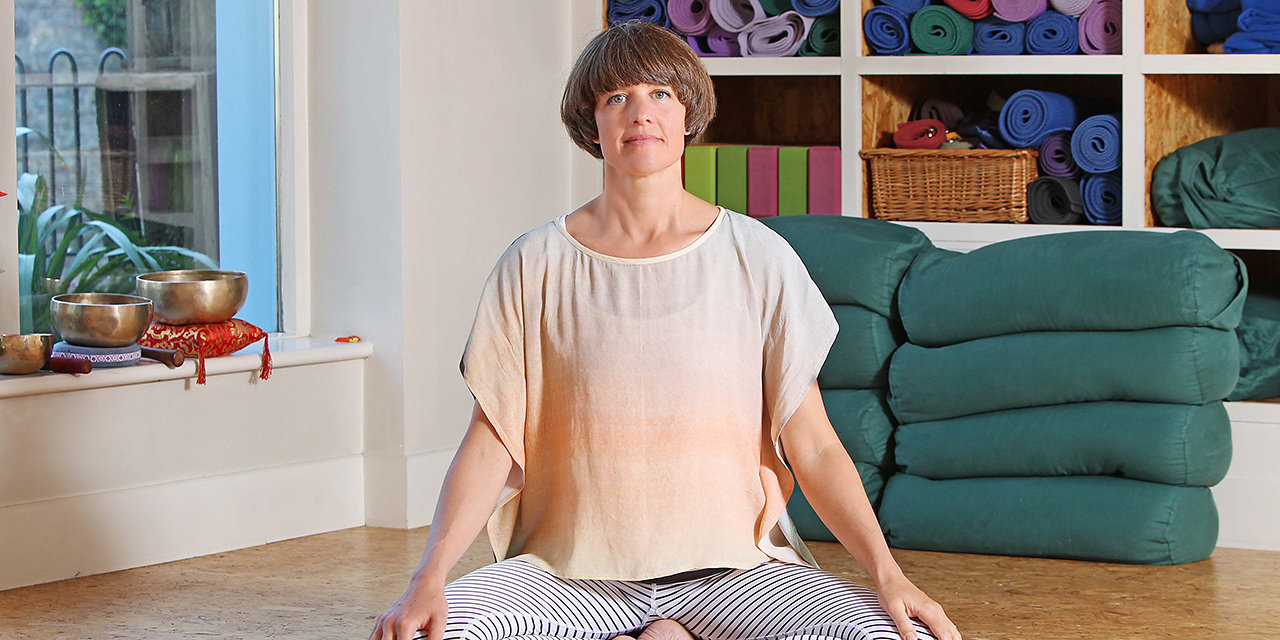Our body is intelligent. Every one of our billions of cells is like a tiny brain. Cells have the capacity to receive and process information, learn, communicate and change. This is something that yoga has taught us for thousands of years and science is now catching up. What scientists and the medical profession agree on is that this body intelligence is particularly true for the gut. In terms of understanding our mental health better, the ‘Gut –Brain –Axis’ as it’s called, is a real breakthrough. There are over 100 million brain cells in our digestive system, the job of these cells is to communicate with the brain in our head to help keep us safe and healthy.
The power of brain cells in the gut
The brain cells in the gut work closely with our nervous system. Information about safety is felt in the gut and sent to the brain along the Vagus nerve. This ‘am I safe?’ signal from the brain cells in the gut is delivered to the brain in the head and processed into a thought and subsequent reaction. The signal could be ‘all is good, I’m safe, I can relax and respond accordingly’. Or the signal could be ‘Not good, unsafe, need to prepare and respond accordingly’.
This stress response happens in a split second, and constantly throughout our lives. It is essential for our survival and health, both physically and mentally. We may think our species has evolved and our human concerns have moved on but we are all driven and motivated by the same gut feelings as those of our ancestors.
What causes stress?
Stress is a worldwide epidemic and the symptoms of stress are considered the number one cause of illness. It can be caused by modern problems like money, work, family, exams, delayed flights etc. These ‘modern problems’ at their core give us the same worried, uncomfortable, unsettled, feeling as our ancestors felt when they were unsafe. It is this unsafe feeling that causes stress and it is a feeling that begins in the belly. Our tummy is the receiver of the ‘this isn’t safe’ feeling from our nervous system.
Whether it’s that angry bear or that angry boss, the signal has the same effect on our guts. Your stomach feels as though it’s tightening into a knot, you feel butterflies and a heavy drop like a stone, bloating, wobbles and churning. These gut feelings are your body’s initial signal to you that you aren’t safe.
Trying to control stress signals with thoughts like ‘don’t be silly, you’re fine’, when your tummy’s turning summersaults…doesn’t do any good, it makes things worse. Learning to listen and respond to the gut brain, rather than over ride stress with the head brain is the key to managing stress and stopping it turning into a whole pile of mental and physical problems.
How can yoga help with these feelings of stress?
The most important part of any yoga practice is ‘Intoroception’ the ability to feel your body’s signals. This can seem simple but because we all live in our heads so much, we have learnt to switch off what our body tells us. Therefore, we need to relearn what our ancestors knew instinctively. How to listen to our guts.
If you regularly stop for a few seconds and check how your body is feeling, how you feel in your belly, then you will be practicing the most important skill in stress management. You will be able to work out and respond to stress at its source. When you are noticing the feelings in your gut, you can practice a few belly breaths to settle, calm and bring you back to feeling grounded and safe again. This simple practice works best if practiced regularly and it only take a few seconds, about six or eight breaths is good.
Belly breathing technique
Bring one hand to your belly and see if you can feel any sensations there now. Hunger, cramps, tiredness, warmth? Then bring your awareness to the feeling of your breath moving in your belly.
On the inhalation, your belly moves out, expands and inflates like a small balloon. Then on the exhalation your belly relaxes back and draws in slightly. Exaggerate this belly breath a few times, feeling more expansion on the inhale and more contraction on the exhale.
See if you can slow down your breath so that you take longer, smoother breaths, and pay close attention to the end of the exhale, when you feel your tummy draw in and the small pause before you inhale.
You can practice this exercise in any position and can do it without your hand on your belly once you know the feeling. If you struggle with sleep problems this is a great exercise to practice in bed to help you get to sleep.
After practicing this belly breath your tummy should feel a bit more relaxed and most importantly, your head should be less caught up with solving all the ‘problems’ so you can go on with your day feeling more calm and in control.
Next month we’ll continue our yoga movement for mood series. You can read Jess’s other blogs on layahealthcare.ie/thrive/lifestyle or download the full exercise booklet here.







